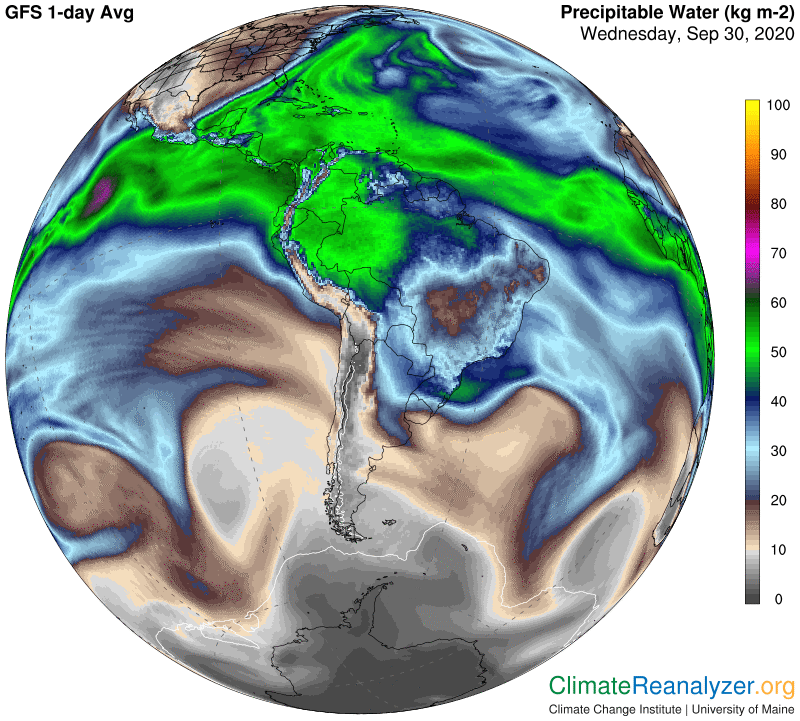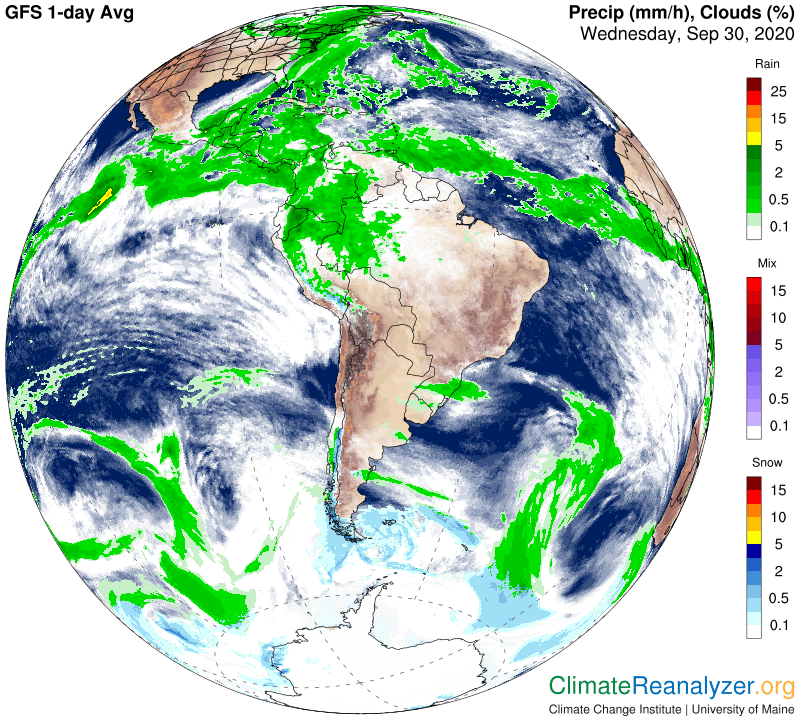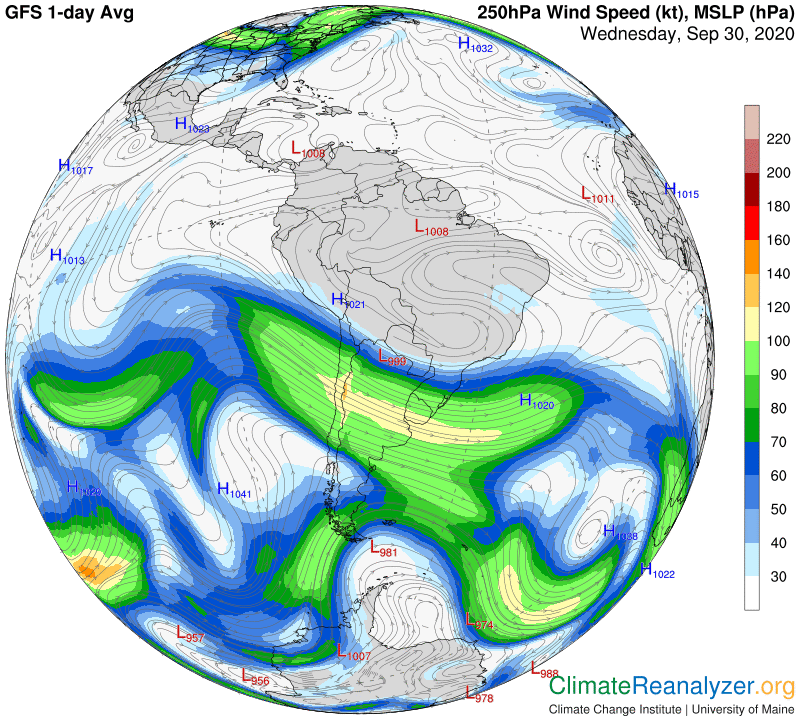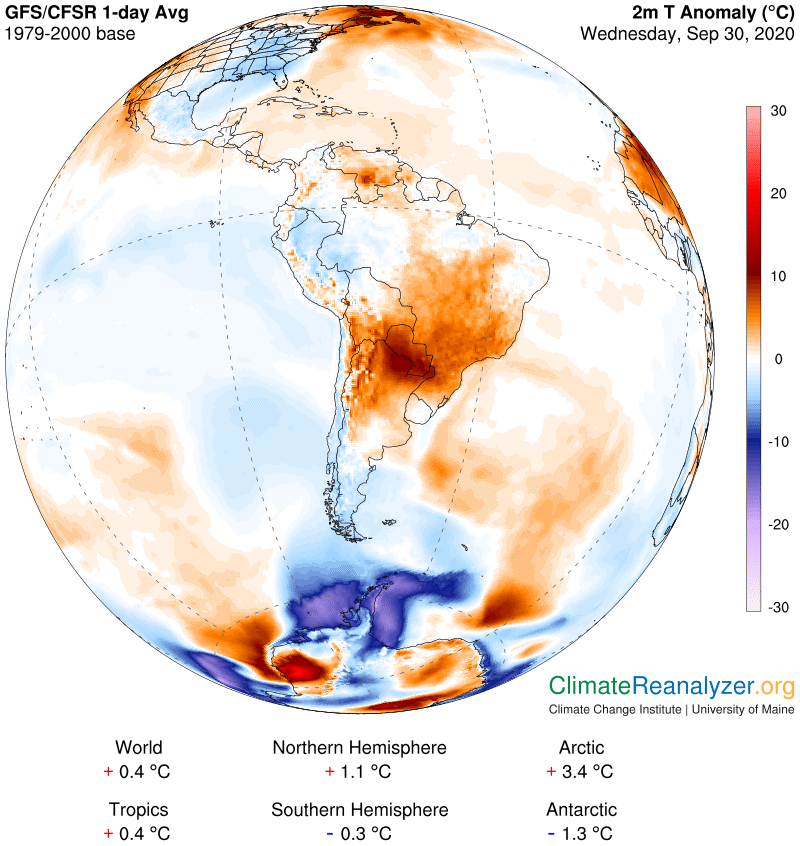Portrait of a stream of water vapor flowing at high altitude. This is one that is renewed practically every day via massive emissions from trees in the Amazon rainforest. Note that part of the broad basin area is probably on the receiving end of a fresh batch of water supply today coming in from the Caribbean Sea. Also, ponder the thought that if a large part of the rainforest were to disappear some day the outgoing vapor stream we are now studying would no longer be able to form. Most of the incoming rainfall would then simply end up in river beds. The vapor stream we see here is a one-day snapshot. On the animated website you can see how its course has changed over each of the last five days. It’s of particular interest today because of the way it curls around, first moving south, then in turn east, north, east, south and finally west before ending on the shore of Antarctica.

Close to half of the route of this stream presently shows either a clear sky or a string of a few scattered clouds. The remainder has plenty of rainfall, starting with a small patch at the point where the stream first makes a sharp turn to the east. A long and broad rainfall pattern accompanies the stream on its second trip south, finally turning to snow at the completion point before the stream disintegrates.

We need to investigate what is behind all of this maneuvering and the precipitation events, which of course prompts an opening of the jetstream map because it usually has most of the answers. I see the vapor stream as it first moves south being partially blocked by strong winds in the most prominent jet, forcing it to move east until it can curl around and head south again. The path is eventually again blocked by another strong jet that it meets head on with no possible means of escape, causing it to disintegrate. The first small rainfall event was probably caused by compression of vapor molecules when their mass was forced to turn east. The largest rainfall, of considerable length, may have begun with more compression while making the bend from east to south, possibly followed by ordinary condensation effects imposed by entering a much colder air space. This happened during a period marked by the absence of any jetstream influence. Compression was probably back in play during the blocking stage at the end when the rain picked up and snow began falling.

Could any of this activity, high in the sky, have had an effect on air temperatures at the surface? That means one more map. For northern Venezuela and Paraguay, both directly under the stream, the greenhouse energy effect from an unusual total water vapor reading near 40kg was enough to produce anomalies near +10C, allowing nasty maximum highs above 100F in many places yesterday. Even after the stream had disintegrated, as precipitation ended and the remaining vapor scattered, there was enough surviving vapor on track, still moving forward, to create a substantial warm anomaly above the sea ice on the continental border. Look closely at the top map and you will see readings of 5-7kg in that patch, compared with just 1-2kg for the nearby cold anomalies. The distinctly independent warming power of water vapor, in a situation separated from any significant presence of other greenhouse gases, is something to be reckoned with.

Carl